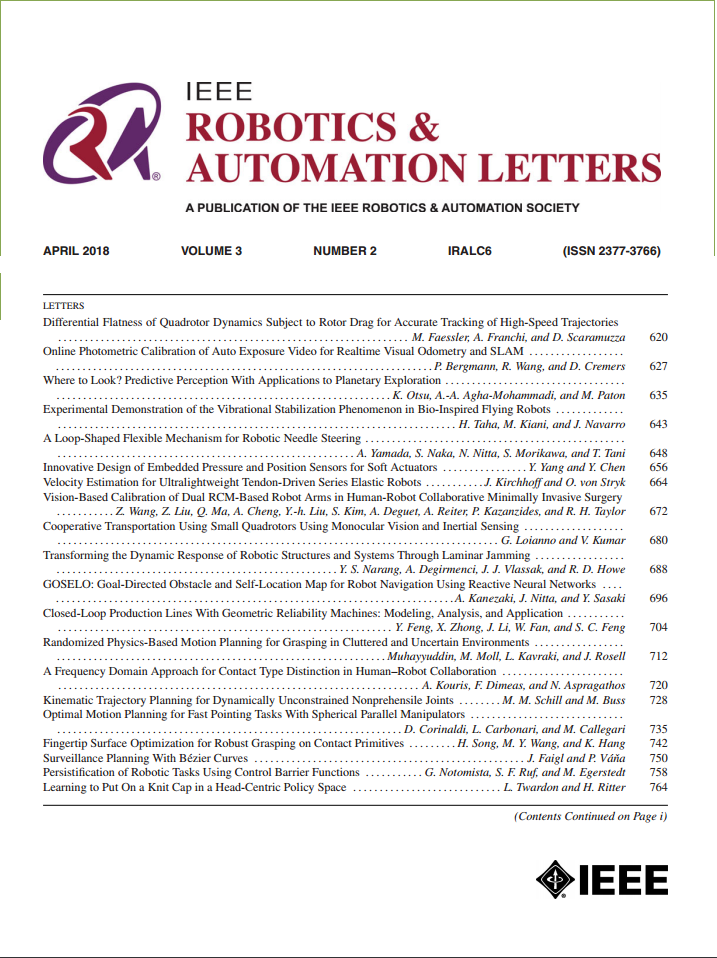Cloud-Native Fog Robotics: Model-Based Deployment and Evaluation of Real-Time Applications
IF 4.6
2区 计算机科学
Q2 ROBOTICS
引用次数: 0
Abstract
As the field of robotics evolves, robots become increasingly multi-functional and complex. Currently, there is a need for solutions that enhance flexibility and computational power without compromising real-time performance. The emergence of fog computing and cloud-native approaches addresses these challenges. In this paper, we integrate a microservice-based architecture with cloud-native fog robotics to investigate its performance in managing complex robotic systems and handling real-time tasks. Additionally, we apply model-based systems engineering (MBSE) to achieve automatic configuration of the architecture and to manage resource allocation efficiently. To demonstrate the feasibility and evaluate the performance of this architecture, we conduct comprehensive evaluations using both bare-metal and cloud setups, focusing particularly on real-time and machine-learning-based tasks. The experimental results indicate that a microservice-based cloud-native fog architecture offers a more stable computational environment compared to a bare-metal one, achieving over 20% reduction in the standard deviation for complex algorithms across both CPU and GPU. It delivers improved startup times, along with a 17% (wireless) and 23% (wired) faster average message transport time. Nonetheless, it exhibits a 37% slower execution time for simple CPU tasks and 3% for simple GPU tasks, though this impact is negligible in cloud-native environments where such tasks are typically deployed on bare-metal systems.云原生雾机器人:基于模型的部署和实时应用评估
随着机器人技术领域的不断发展,机器人的多功能性和复杂性日益提高。目前,需要在不影响实时性能的情况下提高灵活性和计算能力的解决方案。雾计算和云原生方法的出现解决了这些挑战。在本文中,我们将基于微服务的架构与云原生雾机器人集成,以研究其在管理复杂机器人系统和处理实时任务方面的性能。此外,我们应用基于模型的系统工程(MBSE)来实现体系结构的自动配置和有效地管理资源分配。为了证明该架构的可行性并评估其性能,我们使用裸机和云设置进行了全面的评估,特别关注实时和基于机器学习的任务。实验结果表明,与裸机相比,基于微服务的云原生雾架构提供了更稳定的计算环境,跨CPU和GPU的复杂算法的标准偏差降低了20%以上。它改进了启动时间,平均消息传输时间(无线)和(有线)分别快了17%和23%。尽管如此,对于简单的CPU任务,它的执行时间要慢37%,对于简单的GPU任务,它的执行时间要慢3%,尽管这种影响在云原生环境中可以忽略不计,因为这些任务通常部署在裸机系统上。
本文章由计算机程序翻译,如有差异,请以英文原文为准。
求助全文
约1分钟内获得全文
求助全文
来源期刊

IEEE Robotics and Automation Letters
Computer Science-Computer Science Applications
CiteScore
9.60
自引率
15.40%
发文量
1428
期刊介绍:
The scope of this journal is to publish peer-reviewed articles that provide a timely and concise account of innovative research ideas and application results, reporting significant theoretical findings and application case studies in areas of robotics and automation.
 求助内容:
求助内容: 应助结果提醒方式:
应助结果提醒方式:


